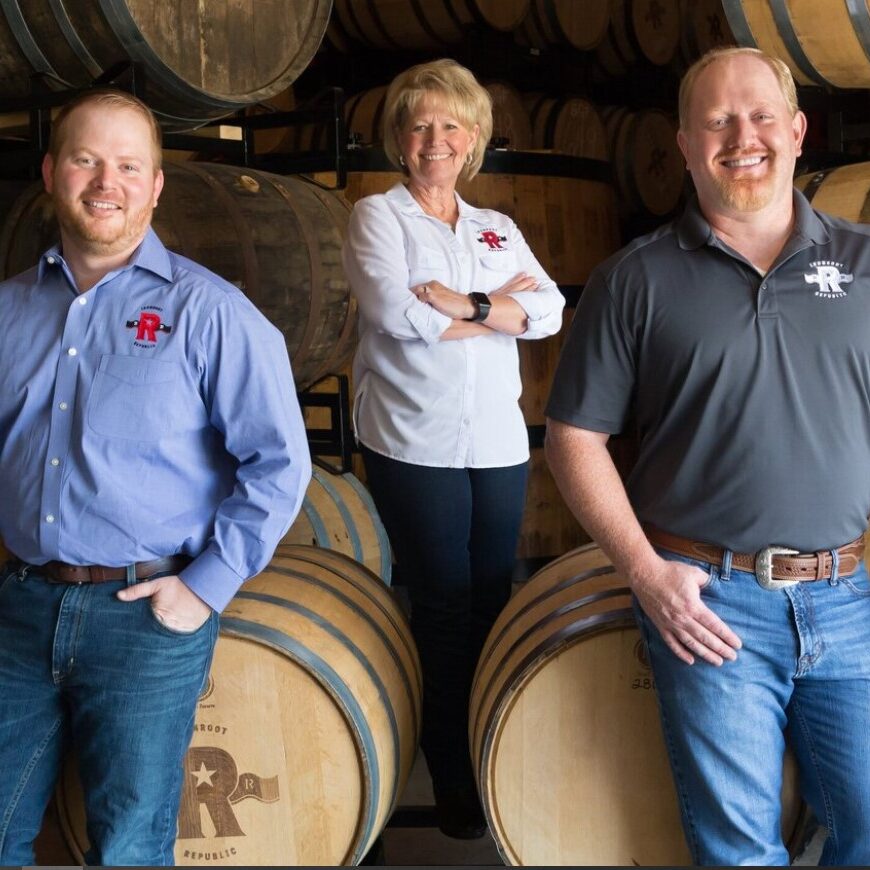
Ironroot Distillery: Jonathan & Robert Likarish

“I was a law student, but I decided to serve a different type of bar. Friends thought we were crazy since there was still a recession in 2012.”
Can you give us a bit of background about yourself and how you started in the whiskey industry?
Jonathan & I (Robert) started our whiskey journey about a decade ago (2010). We visited the Dry Fly Distillery in Spokane, Washington, the first craft distillery we visited, and we fell in love at the sight of those copper stills. I (Robert) was a law student, but I decided to serve a different type of bar.
Friends thought we were crazy since there was still a recession in 2012. Jonathan was an engineer at a surgical power tool company. We began to realize that the two of us weren’t enough, or even four, so we recruited our mother Marcia as well. We went back to Dry Fly and did some training there, but also learned from consultants such as Nancy Fraley.
Can you tell us about your distillery, and what makes it unique?
A couple of things. The use of heirloom varietal grains. Marcia just planted some atomic organic corn for us to use. We have used bloody butcher corn, purple corn, flint corn… You name it. What we are most known for is the use of French techniques in our whiskey distilling and maturation.
We are very involved in the individual barrels thus being able to control the extraction & maturation. The French method was a natural progression since Denison, TX is a sister city to Cognac in France. This is where they retrieved the vines to replenish the vineyards in the late 1800s after the blight hit the Cognac region.
Are there any little ‘distilling’ secrets you can let us in on?
One thing we like is emphasis in slow reduction to your final whiskey. Especially with the aggressive weather we have down here in Texas. We like to give the water & whiskey extra time to interact with the barrel during maturation.
Whiskey has been phenomenally successful in the United States and around the planet, why do you think this is compared to other spirits?
There is a romanticism to whiskey due to the artistry & length of labor that goes into making the spirit. There is also a link to past generations. There is also a new interest in flavour, not only spirits, but also food, with such things as the Food Network. You can have a wider variety in the whiskey category with everything from lighter nuances to bigger heavier flavours.
In your years in the industry, what have been the biggest surprises you have faced?
How the regionality has started to rise in the U.S. There was once just Kentucky and everywhere else. Now you are starting to see traditional Midwest spirits, and also the Empire Rye in NY State or the Maryland Rye, or even Texas whiskey.
Also, winning the World Whisky Awards has been a huge boom to us. Even during this pandemic, we are busier than ever!
What are the big trends that are affecting the whiskey industry at the moment?
The trend over the last few years has been experimentation and innovation.
You are starting to see single barrels, higher proofs and the use of different barrel types.
Are there any interesting stories from your time in the whiskey industry that you could share?
There was the time that Berry Bros. & Rudd in the UK gave us a call to do a collaboration. Their initial email ended up in our junk mail, but once we found it was legit. That was a huge surprise. Unfortunately, after only two batches the rise in tariffs pushed the whole program overboard.
What developments in the whiskey industry most excite you?
We have single malt that has been aging for 3 years now, so the American single malt movement has been exciting. We have begun playing with a number of malts in anticipation of this coming about.
We are also interested in the potential for rum to come into its own.
What do you see as being the future of whiskey in the short term?
The single barrel will continue grow in popularity, as well as higher proof or barrel proof whiskey. There could also be renewed interest in the art of American blended whiskey.
Why do you use the Glencairn Glass in your business and what makes it so special?
We use different Glencairn Glasses for different parts of our process. Typically for distilling, I (Jonathan) use the traditional Glencairn on the still, as well as during the blending process. If something has a smoky character, I (Jonathan) prefer to use the Glencairn Mixer Glass.
As far as seeing the spirit and getting a full picture of the aroma & nose, it is the best. The whiskey clubs love the Wee Glencairn, so much so that they buy them by the box. We had a call the other day from a guy who said he was in desperate need of a Glencairn.